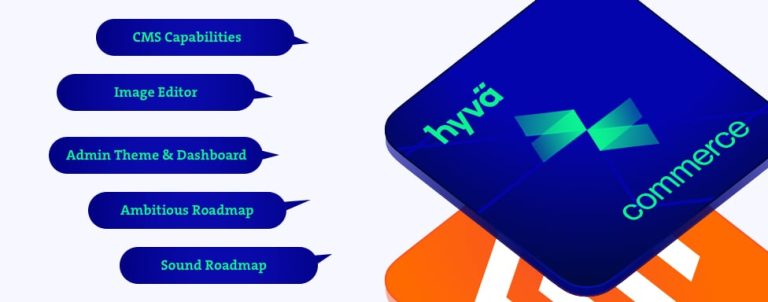At the most basic level, eCommerce personalization is a way of delivering specific content to different customer groups to increase conversion rate and revenue and enhance user experience. When done right, personalization can improve user experience by providing the right content at the right time.
That user-related benefit can easily translate to company benefits such as growth in conversions, revenue, customer engagement, and loyalty.
Keep in mind: personalization is not to be confused with customization. The main difference between the two is that personalization doesn’t require user’s active engagement. You personalize the experience for them. On the other hand, customization requires user’s active involvement.
For example, displaying different promotional banners to different customers is a form of personalization. All the users have to “do” is to belong to the targeted segment. Contrarily, saving a vehicle to a “My garage” functionality is a form of customization. In that case, the user has to select and save all the vehicle information manually.
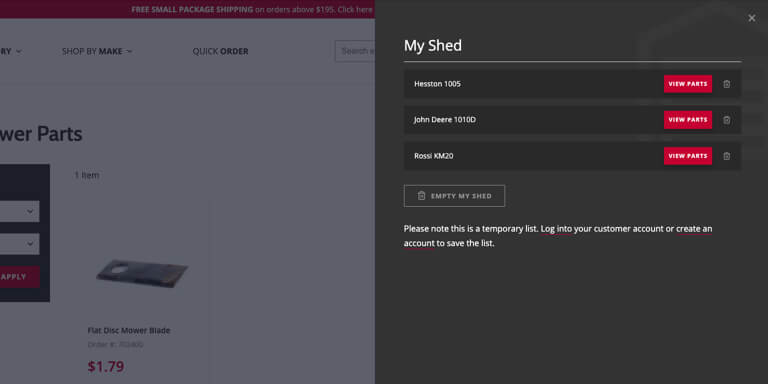
My garage functionality we’ve developed for Sloanex.
Not so long ago, personalization was considered over-rated and an excuse for poorly designed interfaces. However, newer researches show that customers expect some personalization and don’t like to see the generic content they’ll find irrelevant.
According to research, 74% of users feel frustrated when website content is not personalized. More so 80% of consumers are more likely to make a purchase when brands offer personalized experiences. It clearly shows that personalized experiences are not just a trend. Personalization is here to stay, and you should not fall behind!
Getting started in personalization
Personalization is a data-driven process. At the heart of personalization, just like at any informed decision-making process, lies accurate data.
At its core, personalization is the best guess at what might be helpful, relevant, or interesting to a user based on data. That’s exactly why data accuracy is essential. It can easily result in a frustrating experience if you’re targeting users with a wrong set of data.
So, before taking stepping into personalization sphere, a few things have to be in place:
- ability to collect accurate data,
- ability to analyze the data and,
- ability to use the data for delivering experiences.
It all may feel familiar if you’re into user experience design as similar requirements are necessary for any user-centric approach.
And to get there, there are usually two possible ways:
- manual,
- utilizing machine learning.
In the case of a manual approach, a person (such as a data analyst or a marketeer) drives the data collection, analysis, and decisions to set up the targeting rules. It can be as simple as creating a customer segment in Magento and target them with a shopping cart price rule.

The second method relies on software to continually track and analyze customer behavior.
While there’s no right or wrong way to go, going manual, you’re potentially left with personal information and previous transactional data. Such data is usually usable only at the end of the browsing session. Not to mention the time required to gather and analyze the data.
On the other hand, utilizing machine learning can speed up the process and help you leverage both historical and real-time behavioral data, because you leave the data gathering and analysis to a machine algorithm.
Also, machine learning enables you to collect behavioral data and patterns as users browse the site. Such data can be used to dynamically personalize the user experience in real-time and show them content that’s relevant at that specific time.
For example, a customer segment that’s browsing a specific brand can easily be targeted with a special offer for that particular brand when they are browsing it instead of following-up email three days later.
eCommerce personalization
Often when analyzing heatmaps, we see a lot of prime-time page areas ignored. It mostly happens because different customer segments are targeted with the same content. Some may find it meaningful, but other completely irrelevant.
This is especially problematic when working with eCommerce sites with large catalogs and many product ranges. Add thousands of different customers with different affinities, and you get to a point where it’s impossible to craft content and offers that some majority will find relevant. This is precisely why we often see navigation bars and search on homepages on fire in heatmaps. At the same time, the rest of the content is often neglected.
In such situations, personalization can play a crucial role. The personalization approach enables you to display different content to different customer segments. Specially targeted content that different segments will find relevant. While doing so, you’re simultaneously increasing the chances of conversion because you’re removing unnecessary distractions in the shopping process.
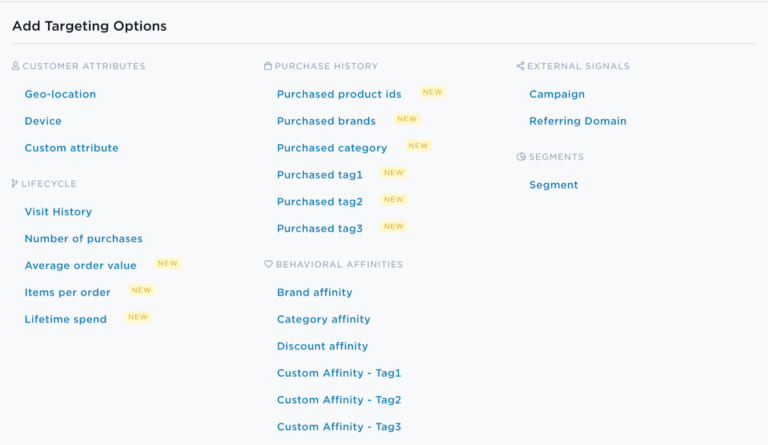
Targeting options for creating segments. Image by Nosto.
Personalization can cover anything from special offers, discounts, copy, custom navigations, product recommendations, mails, or even shipping methods. Every aspect of the customer journey can be personalized for a specific segment, and it’s affinities or needs. Let’s look at a few possibilities.
Personalized content
Content is king, said Bill Gates in 1996, and we can’t disagree. However, the content should have relevance to users. When there are many different customer types, relevance is hard to achieve if you’re providing only one content variation and targeting all customers.
Take a basic carousel on the eCommerce store’s homepage. They usually contain 3-5 rotating banners whose purpose is basically to target the same number of customer segments as there are banners. However, we know that most customers will only see the first one, and not many will scroll through all of them. Was the first one relevant for every segment?

Likely, some segments won’t ever see the banner intended for them, and they might miss out on a fantastic offer you have for them. You could have taken 5 static banners and display only one of those to each targeted segment. That way you could eliminate the risk of the segment not seeing the promotion you’ve intended for them and give them content that would feel relevant to them!
When it comes to content personalization, the sky’s the limit. Starting from single elements such as banners or discount offers on category pages) and personalized copy, you can get to pretty much completely personalized landing pages.
For example, if you’re a sports equipment supplier, you can target different segments by sports affinities. This way, you could craft homepages to show relevant content and offers differently for different segments.
Will football fans find that yoga mat 2+1 offer, or new arrivals from the basketball department on the homepage relevant? Probably not, because they’d be more interested in football-related offers rather than anything else.
Product recommendations
Product recommendations are among the most powerful features any eCommerce store can have. From homepages, select landing pages (like Black Friday special) to category and product pages, right down to the cart page. Product recommendations can be placed anywhere.
Handpicking those recommendations is admittedly hard, and one solution won’t necessarily fit for all your customer segments. We often see these types of product lists completely ignored when analyzing eCommerce sites because the same set of products is usually shown to all customers.
It all comes down to relevance; that is, you can’t count that all customers will find those exact products relevant.
Again, personalization can save the day.
Using historical data from returning visitors, you can use behavioral data and display different product recommendations to different segments. They can be based on their previous activities like previous purchases or products they’ve browsed.
For example, if you run a multi-store, and a fair amount of customers are usually buying jewelry, you can create a segment of customers that would see new jewelry on the new arrivals sections of the homepage. Those products are more relevant to that customer segment than a generic list of new products that are more suitable for new site visitors who are still in the discovery phase.
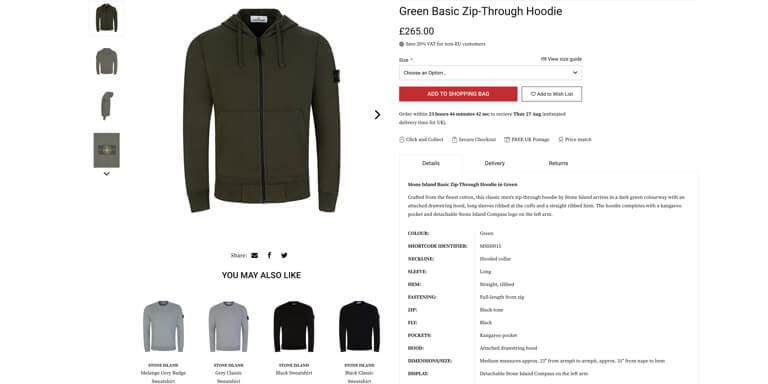
Product recommendations are based on similarity to the product being viewed on Zee&Co.
A similar thing can be achieved on product pages, categories, search results pages, and the cart. We always encourage placing product recommendations on product pages, mainly because those pages are frequent landing pages.
If a customer doesn’t find the product relevant enough, product recommendations are something that can keep them browsing the store. However, those recommendations should be relevant and related to the product the customer is currently browsing. Usually, these will be similar or alternative products to the product being viewed.
Still, if you have the data, you can easily see what other customers that viewed the same product ended up buying and what’s often bought together with that product. This way, you can offer products based on previous customer activities, and those products are more likely to sell.
A cart page is also a place where product recommendations can fit nicely. The product recommendations block on the cart page is ideal for offering complementary products to the ones already in the cart.
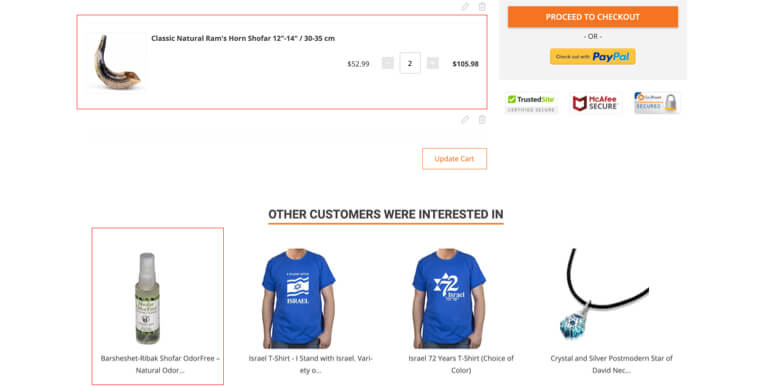
When I’ve added a shofar to my shopping cart on Judaica Webstore, I found a shofar odor neutralizer recommended in my cart
Don’t just rely on your best judgment. Use the data and see what products are often bought together and offer them instead of a generic list.
Emails
Email marketing is probably the most used personalization tool. Unfortunately, many emails stop personalization after using the customer’s first name and continue to generic content and offers. However, emails can be further personalized. You can remind customers of the products they’ve previously looked at or suggest new products based on their previous purchases.
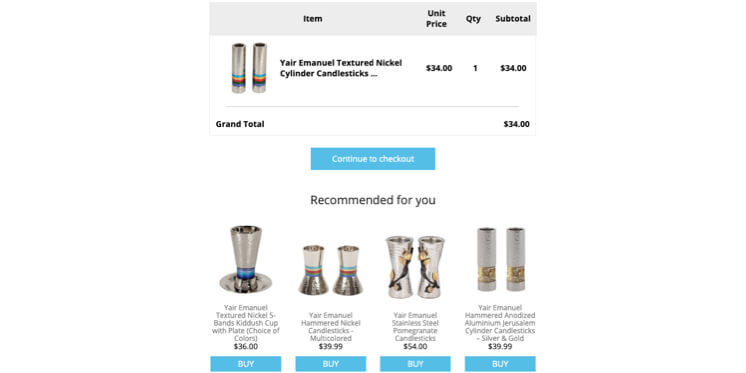
Besides displaying products added to the cart, abandonment emails from Judaica Webstore contain products similar in style, category and price.
Emails are also a powerful tool for recovering abandoned carts or sending special offers such as birthday discounts. Don’t stop at the customer’s name. Go a step further and offer them something they’ll really like.
That’s it for this intro to personalization. Feel free to comment below. See you next time when we’ll take a deeper approach to personalization tactics and examples!

